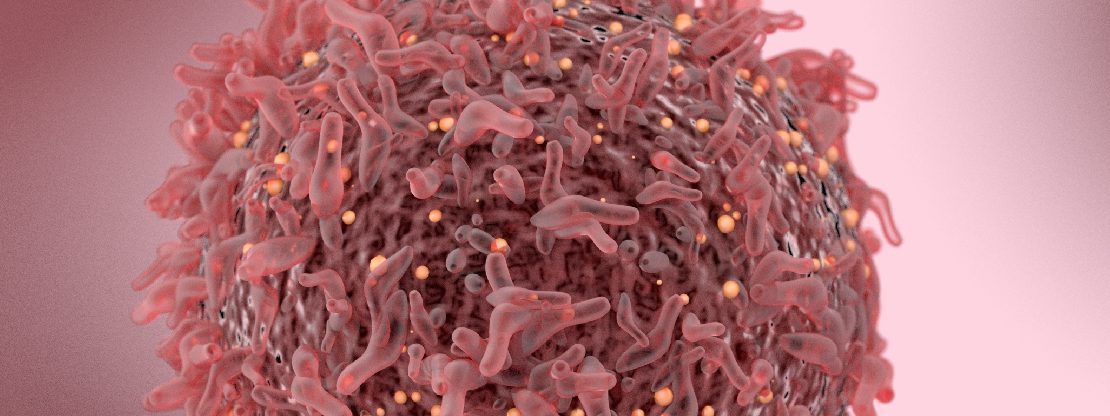July is Sarcoma and Bone Cancer Awareness month, and we wanted to take a deeper look at what these diseases are, whom they may affect and what’s happening in related research right now.
What is a sarcoma?
Sarcomas are a rare group of cancers in which malignant cells form in the bones or connective tissues of the body. These tumors can grow and spread to other parts of the body through a process called metastasis.
There are a few general types of sarcomas:
- Soft tissue sarcomas form in cartilage, fat, muscle, blood vessels, tendons, nerves, and around joints
- Osteosarcoma develops in bone
- Liposarcoma forms in fat
- Rhabdomyosarcoma forms in muscle
- Ewing sarcoma forms in bone or soft tissue [1]
Some types, such as osteosarcoma, rhabdomyosarcoma and Ewing sarcoma, are more common in children and rare in adults [2 & 3]. There are other cancers that start in bone marrow, such as myeloma or leukemia, but these are considered separate from sarcomas and bone cancer.
How is bone cancer related to sarcoma?
Bone sarcomas, otherwise known as primary bone cancers, make up the second largest group of sarcomas. They occur when cells in any of the 206 bones in the human body start to grow out of control [4].
Primary bone sarcoma is uncommon: Less than 0.2% of all cancers are primary bone sarcomas. It’s much more common for other cancers, such as breast, lung or prostate cancers, to metastasize to the bone [5].
There are different types of cancers of the bone, including chondrosarcoma (cancer of the cartilage), chordoma (typically starts in the spinal cord), Ewing sarcoma and osteosarcoma.
How common are sarcomas and bone cancer?
In 2021, more than 13,000 cases of soft tissue sarcoma and around 3,600 cases of bone sarcoma are expected to be diagnosed in the U.S. In 2018, there were an estimated 58,048 people in the U.S. living with bone and joint cancer and nearly 158,000 people in the U.S. living with soft tissue cancer [2]. Sarcomas are difficult to distinguish from other cancers when they are found within organs, resulting in a likely underestimated incidence [1].
Who is at risk?
Bone and joint cancers are most frequently diagnosed in teenagers, while soft tissue cancers typically affect those 55 years or older [1].
Having certain inherited disorders can increase the risk for soft tissue sarcomas [5]. Other risk factors for these sarcomas include past treatment with radiation therapy; exposure to particular chemicals; and long-term lymphedema (swelling caused by a lymphatic system blockage) in the arms or legs.
Past treatment with radiation can also increase the risk of osteosarcoma and other types of bone cancers. Other risk factors for osteosarcoma include treatment with anticancer drugs called alkylating agents; having a particular mutation in the gene for retinoblastoma (a type of eye cancer); and having certain uncommon conditions, including Paget disease, Diamond-Blackfan anemia, and Werner syndrome.
What role does VAI play?
Currently, there is no known way to prevent bone sarcoma, and early detection offers the best chance for successful treatment [5]. Scientists at Van Andel Institute are working to better understand cancer and bone biology in an effort to help inform detection and treatment strategies in the future.
- The lab of Dr. Matt Steensma is interested in determining the mechanisms underlying the formation of tumors in sporadic bone and soft tissue sarcomas and in neurofibromatosis type 1, a rare genetic disorder that can impact cancer risk.
- The lab of Dr. Bart Williams is interested in understanding how alterations in a cellular communication network, the Wnt signaling pathway, contributes to human disease. Wnt signaling plays an important role in cell growth and differentiation. Because of this, alterations in Wnt are among the most common events associated with human cancer. The lab’s long-term goal is to provide insights into strategies to lessen morbidity and mortality associated with cancers that metastasize to the bone.
- The lab of Dr. Tao Yang focuses on skeletal biology and the mechanisms regulating skeletal physiology and disease development, particularly osteoarthritis and osteoporosis. This work to understand bone biology helps scientists determine how to keep bones healthy.
Sources
[1] American Association for Cancer Research. Sarcoma and Bone Cancer Awareness Month. Accessed June 30, 2021. aacr.org/patients-caregivers/awareness-months/sarcoma-and-bone-cancer-awareness-month/
[2] Johns Hopkins Medicine. Bone Sarcomas. Accessed July 2, 2021. hopkinsmedicine.org/health/conditions-and-diseases/sarcoma/bone-sarcomas
[3] Mayo Clinic. Rhabdomyosarcoma. Accessed July 2, 2021. mayoclinic.org/diseases-conditions/rhabdomyosarcoma/symptoms-causes/syc-20390962
[4] American Cancer Society. What is Bone Cancer? Accessed June 29, 2021. cancer.org/cancer/bone-cancer/about/what-is-bone-cancer
[5] American Society of Clinical Oncology. Bone Cancer (Sarcoma of Bone) Guide. Accessed June 30, 2021. cancer.net/cancer-types/bone-cancer-sarcoma-bone/introduction

